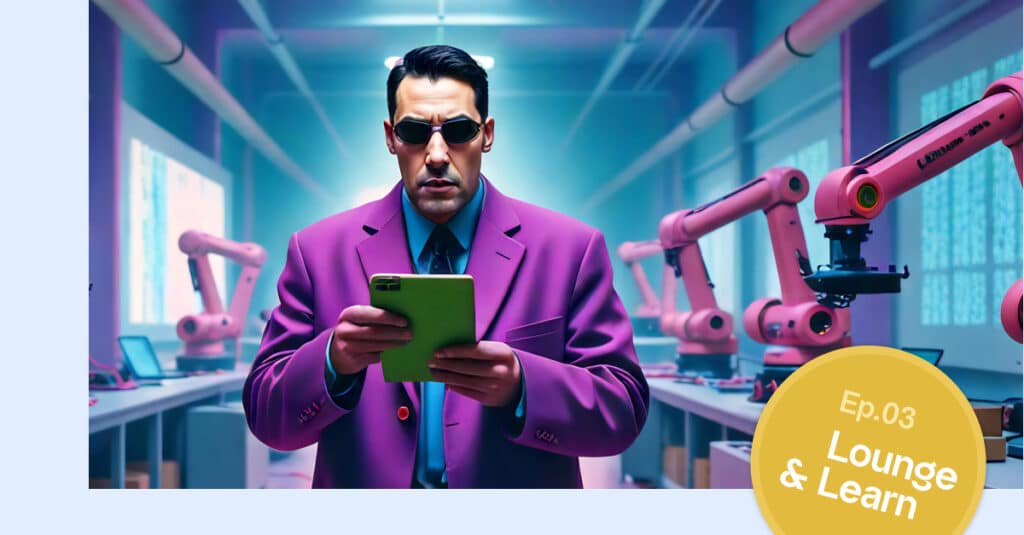
In the context of popped plane doors, collapsing bridges, and exploding space shuttles, “cutting corners” is often cited as a contributing cause. So, when does the drive for efficiency become a dangerous game? And how does this fit with the race for general AI? … Read all about it in our regular round-up of manufacturing-related news.
The Mighty Have Fallen
The headlines are full of stories of the dangers of “cutting corners”, with the most covered story right now being around Boeing and the fall-out of having a plane door blow out midair earlier this year – along with two relatively recent fatal crashes.
According to ‘What We Learned From A Day Of Boeing Hearings’, a picture is emerging of a shocking company culture. “One hearing included testimony from whistleblowers who said bosses at Boeing had threatened them for calling attention to shoddy safety practices, with one saying the company also sought to cover up information about the flaws.”
The hearings taught what happens when quality is sacrificed over cost-cutting and workers are too scared to speak out. In addition, the regulatory body responsible for monitoring any shortcomings, the Federal Aviation Administration (FAA), “was unable to do anything about it.”
“The FAA could have prevented an ever-increasing list of production quality defects,” noted one witness. Hence, the agency is now stepping its own safety management systems by looping in feedback from manufacturers, operators and pilots.”
“The proportion of its members who have less than six years of experience has roughly doubled to 50 percent from 25 percent before the pandemic.”
Brain Drain (Experience Matters)
Meanwhile: ‘“Shortcuts Everywhere”: How Boeing Favored Speed Over Quality’, painted a picture of brain drain: “When the pandemic took hold in early 2020, air travel plummeted, and many aviation executives believed it would take years for passengers to return in large numbers. Boeing began to cut jobs and encouraged workers to take buyouts or retire early. It ultimately lost about 19,000 employees company wide – including some with decades of experience.”
“‘We warned Boeing that it was going to lose a mountain of expertise, and we proposed some workarounds, but the company blew us off,’ Ray Goforth, executive director of the union, said in a statement, adding that he thought the company used the retirements as an opportunity to cut costs by replacing veteran workers with ‘lower-paid entry-level engineers and technical workers’.”
“The proportion of its members who have less than six years of experience has roughly doubled to 50 percent from 25 percent before the pandemic.”
In Other Cutting-Corners Related News
“The wide-ranging fraudulent testing at Japan’s top automaker involved the use of inadequate or outdated data in collision tests, and incorrect testing of airbag inflation and rear-seat damage in crashes. Engine power tests were also found to have been falsified,” according to ‘Toyota Apologizes For Cheating On Vehicle Testing And Halts Production Of Three Models’.
“We are not a perfect company. But if we see anything wrong, we will take a step back and keep trying to correct it,” said Chairman Akio Toyoda, the grandson of the company’s founder. The elder Toyoda was also the ground layer of the Toyota Production System (TPS), which formed the basis of Lean Manufacturing – with both approaches championing the value of a happy and empowered workforce.
“The apparent unraveling of the testing systems at Toyota and its group companies is an embarrassment for an automaker that’s prided itself for decades on production finesse and a corporate culture based on empowering workers to make ‘ever-better cars’.”
“it would have been a bargain to have tug boats escort that ship as opposed to having to spend billions to replace this bridge, avoid the loss of life and the major hit to that region’s economy.”
Not All Automation Comes With A Happy Ending
Then there’s: ‘Behind The Baltimore Bridge Collapse Is A Familiar Story Of A Corporation Cutting Corners’.
“On March 26, the day after the commemoration of the 113th anniversary of the Triangle factory fire that killed 146 mostly female immigrant garment workers in lower Manhattan — a crew of a half-dozen immigrant men in a non-union paving crew fell 185 feet to their deaths from Baltimore’s Francis Scott Key bridge after it was rammed by the Dali, a rudderless massive cargo ship that was trying to leave the port without a tug escort.”
“In the overall scheme of things,” said one insider, “it would have been a bargain to have tug boats escort that ship as opposed to having to spend billions to replace this bridge, avoid the loss of life and the major hit to that region’s economy.”
Alternatively, control of the ship could have been regained by switching to manual control. “But to do that, you need sufficient crew strength […] People are [now] opening their eyes and asking, do I feel safe driving over a bridge knowing there’s a vessel going underneath it. Do I feel safe with a train coming into the city carrying all these chemicals? Do I feel safe on a plane while there’s a company cutting corners on how they build these things?”
Demands Of the Job: To Cut Corners
“Frontline manufacturing workers in the UK say they’re having to cut corners and risk their safety to meet the demands of the job, prompting calls for employers to provide extra support,” according to ‘Half Of Manufacturing Workers Are Cutting Corners And Risking Their Safety At Work’.
“The research further reveals a gap in trust, as one in five (20%) say they reported a near miss to their employer, but it wasn’t taken seriously. Another 12% who saw a near miss didn’t report it as they thought their employer wouldn’t take it seriously.”
“On top of pressures in the workplace, manufacturing staff reported feeling stretched and stressed by external disruption. Four of the top five disruptions to the UK’s manufacturing workforce in the past 12 months are weather-related, with hot temperatures, icy weather, floods, and poor air quality all preventing staff from doing their jobs, alongside road disruption.”
“With risk and disruption, communication is key. Management should maintain an open dialogue with staff on the shop floor and take reports seriously, especially as the technology exists to react in real-time and minimize disruption.”
“When playing Russian roulette, the fact that the first shot got off safely is little comfort for the next.”
Nothing New About Weighing Risks Versus Expediency
As is becoming obvious, uncertainty often forces companies – and government organizations – to choose expediency over risk.
According to ‘What We Didn’t Learn From a Space Shuttle Disaster’: “The human element — sometimes heroic, sometimes cloaked in doublespeak and bluster — shines through the many technical aspects of this story, a constant reminder that every decision was made by people weighing risks versus expediency, their minds distorted by power, money, politics and yes-men. It’s a universal story that transcends time, from Napoleon’s decision to attack Russia to the recent Boeing 737 Max debacle.”
As the renowned physicist Richard Feynman wrote after the investigation into the Challenger accident: “When playing Russian roulette, the fact that the first shot got off safely is little comfort for the next.”
Now What?
So perhaps there are lessons we should take on board as we enter a new age of AI – and chase after unleashing its many obvious benefits. Already, there are AI-driven tools for manufacturing that increase efficiency without cutting corners — meaning they are decreasing risk.
At the same time, as the development of generative AI only accelerates, we should stay awake and build AI for the right purposes. After all, it remains uncertain what all the consequences can be. And certainly, there’s still a lot of trust-building to be done.
In other words, this is definitely not a time to cut corners.




